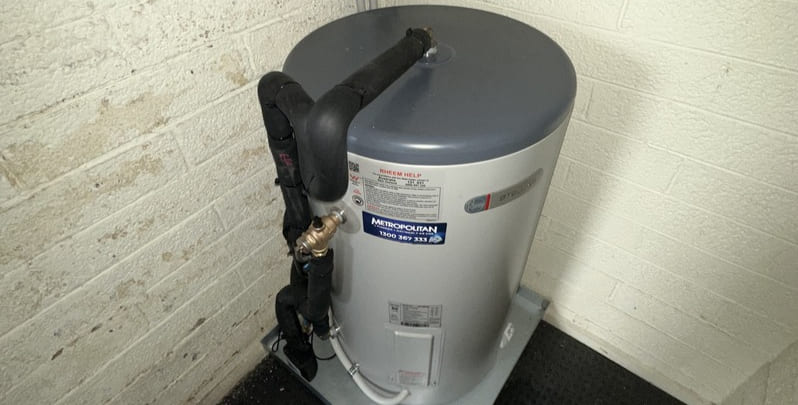Low water pressure is a common plumbing issue that almost everyone has faced at some point in their lives. When the water pressure in your home drops significantly, it can turn simple tasks into frustrating experiences. Filling the kitchen sink might take longer than usual, and even a relaxing shower at the end of the day becomes less enjoyable. The same goes for hot water pressure — when it’s low, it only adds to the inconvenience.
There are many possible reasons behind low water pressure in your home. From clogged pipes and leaks to a faulty pressure regulator, understanding these causes can help you identify and fix the problem more effectively. In this guide, we’ll walk you through the most common causes and provide practical solutions to restore your water pressure.
### Common Causes of Low Water Pressure
Low hot water pressure can make everyday tasks frustrating. Here are some of the typical issues you might be facing:
- **Faulty fixtures**: Clogged taps, showerheads, or outdated faucets can restrict water flow.
- **Leaky pipes**: Hidden leaks in your plumbing system can cause a significant drop in pressure.
- **Corroded or clogged pipes**: Mineral buildup or corrosion in older pipes can block water flow.
- **Faulty pressure regulator**: A malfunctioning regulator can lead to inconsistent or low water pressure.
- **High water demand**: Using multiple water sources at once can temporarily reduce available pressure.
By identifying and addressing these issues, you can improve the performance of your plumbing system and enjoy better water flow.

### Check the Water Meter and Main Water Line
Before assuming the worst, start by checking your water meter and main water line. Ensure the water meter valve is fully open — a partially closed valve can limit water flow. It's also worth contacting your local water supplier to check if there are any service interruptions or temporary reductions in pressure. Additionally, inspect your main water line for signs of damage or leaks, as these can severely impact water pressure.
If everything seems fine but the problem persists, it may be time to call a professional plumber.
### Faulty Fixtures May Be the Culprit
Sometimes, the issue isn’t with your entire plumbing system but with specific fixtures. These include:
- **Taps** – Blockages or wear can reduce water flow.
- **Showerheads** – Mineral deposits can clog small holes, lowering pressure.
- **Toilets** – A faulty fill valve can affect water pressure during refilling.
- **Water softeners** – These can reduce pressure if they become clogged.
- **Washing machine connections** – Leaks or blockages in hoses can lower water flow.
- **Dishwashers** – A clogged inlet valve can reduce water pressure.
In many cases, simply cleaning or replacing these fixtures can resolve the issue without the need for major repairs.
### Issues with Your Water Pipes
If your fixtures and meter are in good condition, the problem may lie within your pipes. Here are some potential pipe-related issues:
#### Corroded Pipes
Older homes with galvanized steel pipes are especially prone to corrosion. Over time, this can lead to blockages and reduced water pressure. Depending on the extent of the damage, you may need to replace only the affected section or the entire piping system.
#### Pipe Build-Up
Mineral deposits and sediment can accumulate inside your pipes over time, causing blockages. A professional plumber can flush your system or install an inline filter to prevent future issues.
#### Incorrect Pipe Size
If you recently had plumbing work done, the wrong-sized pipes could be the cause. Always hire licensed and experienced plumbers to avoid costly mistakes.
#### Leaky Pipes
Even small leaks can lead to noticeable drops in water pressure. If you notice a sudden increase in your water bill or signs of water damage, it’s best to let a professional handle the repair.
### High Demand Can Cause Low Pressure
If your household uses a lot of water at the same time, your system may struggle to keep up. This can result in low pressure, especially when using hot water. Consider coordinating water usage or upgrading your hot water system if the problem persists.

### Faulty Pressure Regulator
A pressure regulator controls the water pressure entering your home. If it’s not working properly, it can cause either too low or too high pressure. If you suspect a faulty regulator, it’s best to have a licensed plumber replace it to restore proper pressure levels.
### How to Test Your Water Pressure
Testing your water pressure is simple and can help you determine whether you have a real issue. Here’s how:
- **Use a pressure gauge**: Attach it to an outdoor tap and turn the water on. Normal pressure should be between 40–60 psi.
- **Check multiple taps**: If only one tap has low pressure, the issue may be isolated.
- **Test both hot and cold water**: Low hot water pressure may indicate a problem with your hot water system.
This information can help you decide whether you need further assistance.
### Issues with Your Local Water Supply
Before calling a plumber, consider the possibility that the problem lies with your local water supply. Contact your council or water provider to check if there are any ongoing maintenance works or service disruptions that could be affecting your pressure.
### Get Metropolitan Plumbing to Help
If you're struggling with low water pressure, Metropolitan Plumbing offers expert services to diagnose and fix the issue. Our technicians can conduct pressure and flow tests, perform essential maintenance, and ensure your plumbing system runs smoothly. We’re available 24/7 to assist you.
*Please note: This information is for general guidance only. Regulations vary by location, so always consult a professional before making any changes.*
Packing Retainer,Retainer Container,Veamor Retainer Case
Ningbo Hinix Hardware Industry & Trade Co., Ltd , https://www.hinixpack.com
